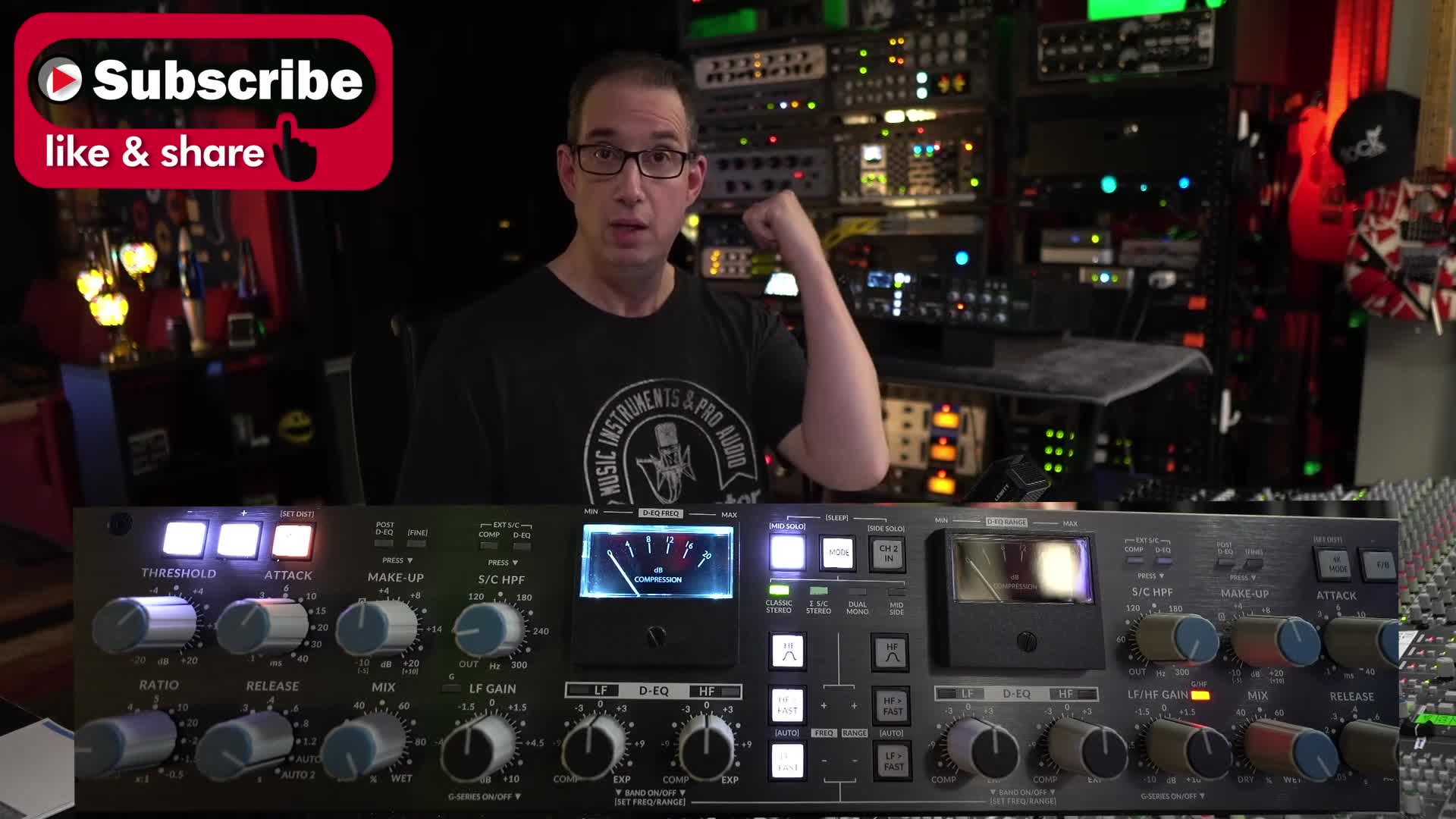Diving Deeper into the SSL Bus+: Part 2 Overview

Hey everyone, welcome back to the channel! Today, we continue our exploration into the incredible world of the Solid State Logic (SSL) Bus+ with Part 2 of our series. If you're a musician or an engineer keen on mastering the art of mixing, you're in the right place. Let's dive in and build on what we covered in Part 1.
Recap and Rabbit Holes
Previously, we took a basic look at setting up the SSL Bus+ in a fashion similar to the console compressor that many of you might be familiar with, especially if you own an SSL Origin or a 500 series rack of the SSL G series bus compressor. We also explored a few unique features exclusive to the Bus+. If you missed out on that foundational video, make sure to check it out here.
A Series in the Making
We're embarking on an exciting 3 to 4-part video series to dissect everything this thing can do. However, with the sheer capability of the Bus+, it's uncertain if we'll uncover every feature. In Part 2, we’re picking up where we left off. Expect to see us using the same music and compressor settings as we did last time, and let's get ready to add some layers.
Features to Love
In this session, we'll go over several intriguing features such as:
-
Push-Pull and Push-Push Knobs: Understanding their functionality and impact on your mixes.
-
Dynamic EQ Section: An all-new lane worth exploring.
Future Sessions
In the coming videos, we'll branch out to showcase different modes, delve into the Transient Designer feature, and demonstrate how to unlock it. We’ll also engage with your feedback, aiming to experiment with ideas like parallel compression to push the limits of the Bus+.
The Importance of Your Input
Your comments drive these sessions. We want to know what else you'd like to see from the Bus+ demonstrations. Are there unique use cases or out-of-the-box ideas bubbling in your mind? Let us know!
"This thing does so much. It's crazy that I don't know that I'm going to get through all the features, and I'm sure there's going to be things that you guys are going to want to see that I won't even realize until you tell me about it."
And if you are already using the Bus+, we'd love to hear about your experiences and the innovative ways it's benefiting your mixes.
Digging into the Details
Let's delve into the stereo setup for this video. We’re only utilizing the left side of the compressor, which controls the stereo image entirely—except for a single knob linked to the dynamic EQ section. Diving into my notes, the intricacies of these multi-function buttons can get complex. Trust me, keeping the 40-page manual handy is a game-changer.
Multi-Function Marvels
A standout feature is the Makeup Gain Knob. With its stepped design for easy recall, it adjusts in 1dB increments, while a press-and-hold action unlocks "Fine Mode," allowing adjustments in 0.5dB increments. Familiarize yourself with these buttons:
-
Compressor Positioning: Shift the compressor’s position relative to the dynamic EQ by tapping the makeup gain button.
-
Side Chain Cycling: Easily control whether the side chain precedes or follows the dynamic EQ and compressor.
Take the time to experiment with these features. Trust me, the sonic textures and clarity you can achieve are phenomenal!
Sound Demo Time
Here’s a snapshot of the audio we’re playing with—expect around 4dB of compression, coupled with the 4k mode, low THD, and feedback mode engaged. This introduces a level of saturation and thickness I utterly enjoy—adding a unique character you won’t find in mere console compression.
Dynamic EQ Exploration
What makes the dynamic EQ section special? Read on, fearless aficionados of sound!
Frequency Fun
The dynamic EQ focuses on dual frequencies: low at 60 Hz and high at 6k. Whether adjusting to expand or compress the sound, clockwise changes initiate expansion, while counterclockwise movements push toward compression. Visual LED feedback helps signal processing status.
Hands-On Time
Experiment across compression and expansion settings—see how the frequency interplay can elevate your track before toggling preset-and-adjustable settings like attack, release, and frequency bells.
Make It Yours
The SSL Bus+ promises versatility beyond initial perceptions. Play around with frequency settings, acquaint yourself with the agile dynamics of attack times, and shift frequencies directly from your mixer. Printing the manual ensures a roadmap to regions unexplored yet immensely satisfying.
Unwavering Versatility with Ease
After exploring options like frequency points and dynamic EQ in various settings, the richness of what the SSL Bus+ offers becomes more evident. Whether you're leaning toward master busses or specific percussion-asparallels, the Bus+ is equipped to carry your sound aspirations significantly further.
Stay Tuned
In Part 3, the stage is set for experimenting with parallel compression and unpacking the Transient Designer's potential. As a preview, there's a quirky coding "game" to unlock it, as detailed in the manual, and we’ll take you through it.
Call to Action
Solid State Logic blessed us with this unit for review, and your curiosity fuels our creative fires. Anticipate organic in-action insights, fashioned through studio experiences. The Bus+ is my current obsession—its superior sound quality outshines the onboard console I've previously used.
Please share your thoughts in the comments! Keep the pulse alive by liking, sharing, and subscribing. Until next time, I’m Dave with mixandmusicanaanalog.com—let’s make more musical magic together.
Stay plugged in for the next chapter in this remarkable audio journey. Let's keep exploring, learning, and pushing audio boundaries!



